HEBRON IS TODAY’S AMONA
mattot.arim@gmail.com wrote: GOOD MORNING, RIGHTWING VOICES Please call the 2 rightwing ministers about what's going on in Hebron. Mention that you have not heard them voicing their opinion in the media against repeating Gush Katif scenarios, this time in Hebron:http://www.ynet.co.il/articles/0,7340,L-3431720,00.htmlhttp://www.nrg.co.il/online/1/ART1/615/424.htmlAvigdor Liberman's Office: tel. 02 6547100 fax 02 6547101 Eli Yishai's Office Fax 02-6662255; Tel 02-6662909 Please forward any interesting replies straight to mattot.arim@gmail.com; hebron.mail@hebron.org.il ; The Jewish Community of Hebron / P.O. Box 105, Kiryat Arba 90100 Israel / Tel: 972-2-9965333; Fax: 972-2-9965304 / info@hebron.com and to janetlehr@veredart.com
Also, please click on the above 2 articles and add talkback comments at the bottom. Our politicians NEED to know how upset you are³ and yes, they DEFINITELY read (and count) talkback. mattotarim-subscribe@eretz.org mattotarim-subscribe@eretz.org if you got this from a friend & would like to join our distribution list, send a blank email tomattot.arim@gmail.com Comments? Or: Want your friends in USA etc. to join our foreign list? Contact mattot.arim@gmail.com
Background
1
Arlene sends almost daily briefings – to subscribe: akushner@netvision.net.il
On July 7th 2007 a large army and police contingent evicted two Jewish families from a marketplace in Hevron just days after 60 Combat solders of the elite combat unit (Dukhifat) refused orders to forceably remove these Jews.
The market stands on Jewish land. It was purchased, in front of Arab witnesses, in 1807 by Rabbi Haim Bajaoi, at a time when there was a thriving Jewish Quarter in the ancient city; the five dunams he purchased were adjacent to the Quarter and dedicated to the use of the Jewish community.
Jews disappeared from Hevron in 1929, after a horrendous Arab massacre (instigated, it should be noted by the Grand Mufti of Jerusalem, Haj Muhammad al-Husseini, who was Arafat's mentor, some sources say he was Arafat’s Uncle). Those Jews who survived were moved out by the British, who then controlled the area under the Mandate for Palestine: It was easier to remove them than protect them.
Hebron is the first Jewish city in the land of Israel, home of our patriarchs and matriarchs - Abraham, Isaac and Jacob and Sarah, Rebecca and Leah. It is located 32 km. (approximately 18 miles) south of Jerusalem in the Judean hills. King David ruled from Hebron for more than seven years before moving the capital to Jerusalem.
Jews have lived in Hebron almost continuously for thousands of years. At Tel Hebron, commonly known as "Tel Rumeida," artifacts were discovered dating to the era of the Patriarch Abraham. "L'Melech" (King) seals, 2,700 years old, inscribed with the word "Hevron" in ancient Hebrew were uncovered there by archeologists.
Hebron is first mentioned in the book of Genesis (13:18), where Abraham is found pitching his tent. Later when Sara, his wife, dies - in Kiryat Arba that is Hebron, Genesis 23:2 - he buys a field and the burial cave of Machpela for her (Genesis 23:9, 17-20). Numbers 13-22 states that (Canaanite) Hebron was founded seven years before the Egyptian town of Zoan, i.e. around 1720 BCE In fact all the fathers, Abraham, Isaac, and Jacob, and - three of the four - mothers, Sara, Rebecca, and Leah lived there, and were buried there in the Cave of Machpela. According to a Jewish tradition — Adam and Eve are also buried there. It was so important to Jacob, that seeing his end nearing, he called his 12 sons to gather around him, and promise that when he dies, they will leave Egypt to bring his body back to Hebron for burial (Genesis 49:29-31). What nation has such a clear link to its progenitors, where they lived, died, and are buried?
Hebron continued to be an important and holy site to Jews. In fact, so much so that one of Jacob's great-grandsons - Levi's grandson and Kehat's son - was named Hebron (Numbers 3:19). Moses and Aaron had an Uncle Hebron. After the exodus from Egypt, when Moses sent the 12 spies to check out the land, one of them Calev, took a little detour to Hebron to pray at the family tomb - the Cave of Machpela (Numbers 13:22). Later, King David established Hebron as his first capital city. "In Hebron he reined over Judah seven years and six months, and in Jerusalem he reined thirty three years over all Israel and Judah" (Samuel II 5:5). Clearly Hebron and Jerusalem are intertwined in the Jewish people's historical memory.
Hebron is mentioned 87 times in the Bible, and is the world's oldest Jewish community. Joshua assigned Hebron to Caleb from the tribe of Judah (Joshua 14:13-14), who subsequently led his tribe in conquering the city and its environs (Judges 1:1-20). As Joshua 14:15 notes, "the former name of Hebron was Kiryat Arba..."
Following the death of King Saul, God instructed David to go to Hebron, where he was anointed King of Judah (II Samuel 2:1-4). A little more than 7.5 years later, David was anointed King over all Israel, in Hebron (II Samuel 5:1-3).
The city was part of the united kingdom and — later — the southern Kingdom of Judah, until the latter fell to the Babylonians in 586 BCE. Despite the loss of Jewish independence, Jews continued to live in Hebron (Nehemiah 11:25), and the city was later incorporated into the (Jewish) Hasmonean kingdom by John Hyrcanus. King Herod (reigned 37-4 BCE) built the base of the present structure — the 12 meter high wall — over the Tomb the Patriarchs.
The city was the scene of extensive fighting during the Jewish Revolt against the Romans (65-70, see Josephus 4:529, 554), but Jews continued to live there after the Revolt, through the later Bar Kochba Revolt (132-135 CE), and into the Byzantine period. The remains of a synagogue from the Byzantine period have been excavated in the city, and the Byzantines built a large church over the Tomb of the Patriarchs, incorporating the pre- existing Herodian structure.
Jews continued to live in Hebron after the city's conquest by the Arabs (in 638), whose generally tolerant rule was welcomed, especially after the often harsh Byzantine rule — although the Byzantines never forbade Jews from praying at the Tomb. The Arabs converted the Byzantine church at the Tomb the Patriarchs into a mosque.
Upon capturing the city in 1100, the Crusaders expelled the Jewish community, and converted the mosque at the Tomb back into a church. The Jewish community was re-established following the Mamelukes' conquest of the city in 1260, and the Mamelukes reconverted the church at the Tomb of the Patriarchs back into a mosque. However, the restored Islamic (Mameluke) ascendancy was less tolerant than the pre-Crusader Islamic (Arab) regimes — a 1266 decree barred Jews (and Christians) from entering the Tomb of the Patriarchs, allowing them only to ascend to the fifth, later the seventh, step outside the eastern wall. The Jewish cemetery -- on a hill west of the Tomb — was first mentioned in a letter dated to 1290.
The Ottoman Turks' conquest of the city in 1517 was marked by a violent pogrom which included many deaths, rapes, and the plundering of Jewish homes. The surviving Jews fled to Beirut and did not return until 1533. In 1540, Jewish exiles from Spain acquired the site of the "Court of the Jews" and built the Avraham Avinu ("Abraham Our Father") synagogue. (One year — according to local legend — when the requisite quorum for prayer was lacking, the Patriarch Abraham himself appeared to complete the quorum; hence, the name of the synagogue.)
Despite the events of 1517, its general poverty and a devastating plague in 1619, the Hebron Jewish community grew. Throughout the Turkish period (1517-1917), groups of Jews from other parts of the Land of Israel, and the Diaspora, moved to Hebron from time to time, joining the existing community, and the city became a rabbinic center of note.
In 1775, the Hebron Jewish community was rocked by a blood libel, in which Jews were falsely accused of murdering the son of a local sheikh. The community -- which was largely sustained by donations from abroad -- was made to pay a crushing fine, which further worsened its already shaky economic situation. Despite its poverty, the community managed, in 1807, to purchase a 5-dunam plot -- upon which the city's wholesale market stands today -- and after several years the sale was recognized by the Hebron Waqf. In 1811, 800 dunams of land were acquired to expand the cemetery. In 1817, the Jewish community numbered approximately 500, and by 1838, it had grown to 700, despite a pogrom which took place in 1834, during Mohammed Ali's rebellion against the Ottomans (1831-1840).
In 1870, a wealthy Turkish Jew, Haim Yisrael Romano, moved to Hebron and purchased a plot of land upon which his family built a large residence and guest house, which came to be called Beit Romano. The building later housed a synagogue and served as a yeshiva, before it was seized by the Turks. During the Mandatory period, the building served the British administration as a police station, remand center, and court house.
In 1893, the building later known as Beit Hadassah was built by the Hebron Jewish community as a clinic, and a second floor was added in 1909. The American Zionist Hadassah organization contributed the salaries of the clinic's medical staff, who served both the city's Jewish and Arab populations.
During World War I, before the British occupation, the Jewish community suffered greatly under the wartime Turkish administration. Young men were forcibly conscripted into the Turkish army, overseas financial assistance was cut off, and the community was threatened by hunger and disease. However, with the establishment of the British administration in 1918, the community, reduced to 430 people, began to recover. In 1925, Rabbi Mordechai Epstein established a new yeshiva, and by 1929, the population had risen to 700 again.
Our community offices are in a neighborhood founded in 1540 by Jews exiled from Spain in 1492. Jewish presence in Hebron came to an abrupt end only in August 1929, when Arab riots led to the murder of 67 Jews and the wounding of 70. All survivors were exiled from the city by the ruling British.
Following the riots, massacre and exile in 1929, a small group of Jews returned to Hebron in 1931. About thirty families, principally women and children, lived in the city until just after Passover, 1936, when they were forcibly expelled by the British.
In the 1920s and the 1930s there was no Jewish state, no Jewish army, no Jewish ability to truly defend themselves. Today, 78 years later, we have Jewish police, Jewish military, a Jewish government, a Jewish state. It seems that they prefer not to follow in the footsteps of the first Jew, Abraham, who, being commanded by G-d to "Lech Lecha" to "Go" to walk the land, the length and width of Eretz Yisrael, did just that, stopping only in Hebron, making this city his home, the first Jewish city in the Land of Israel. Rather, the Israeli state, using all of the resources available to such a sovereign body, prefers to follow in the footsteps of the Mufti and the British. The Mufti slaughtered people. Very clearly, Amin el Husseini's goal was the expulsion of Jews, starting with Hebron, and reaching Jerusalem, and other cities in Israel. He wanted Jews out, and cared not how it happened. He had plans to annihilate all the Jews living in Eretz Yisrael following Rommel's expected invasion of Israel during World War Two. He met with Hitler in Berlin in the 1930s and clearly discussed more than formation of the Muslim Brigades, which fought against the allied forces in Europe.
In 1948, the Jordanians occupied this area; an Arab market was established on the land that Bajaoi had purchased. During the Jordanian occupation, which lasted until 1967, Jews were not permitted to live in the city, nor -- despite the Armistice Agreement -- to visit or pray at the Jewish holy sites in the city. Additionally, the Jordanian authorities and local residents undertook a systematic campaign to eliminate any evidence of the Jewish presence in the city. They razed the Jewish Quarter, desecrated the Jewish cemetery and built an animal pen on the ruins of the Avraham Avinu synagogue. Following the 1967 Six-Day War, Jews again had access to the first Jewish city in Israel. It must be clearly understood: when returned to Hebron in 1967, Jews did not occupy a foreign city; rather, they came back home.
In 1968 Jews officially came back to Hebron . The day before Passover in April, 1968 a group of families arrived at the Park Hotel in Hebron. The proprietor rented them half of the kitchen, which they promptly koshered. The women and children slept in the rooms; the men and boys slept in the lobby and on the floor. It was the first Jewish Pesach in Hebron in decades.
Moshe Dayan, then Minister of Defense, arrived in Hebron shortly after Passover. Following several weeks of discussions he offered the group two choices: either be forcibly removed from the city, or go live in the Hebron military compound, several kilometers outside the center of the city. This building, originally a British police station, had been transformed into the Israeli military Headquarters of Judea. It was not overly conducive to a civilian lifestyle. Dayan must have expected that the young families, including women and babies, would soon throw up their arms in frustration at the poor living conditions and leave of their own accord.
Dayan was partially correct. The group did eventually leave. But first they lived in the military headquarters for two and half years, until the first neighborhood of the newly founded Hebron suburb, Kiryat Arba, was completed.
There was, however, a yearning to return to Hebron , to Beit Hadassah, to the 450 year old Jewish Quarter, home of the ancient Avraham Avinu Shul, to reside adjacent to Ma'arat HaMachpela. Attempts were made, again and again, all leading to failure. Only in 1979, when Menachem Begin was Prime Minister, did a group of 10 women and 40 children succeed in setting up house in the basement of the old medical center, Beit Hadassah, in the middle of the city. Living in adverse conditions for close to a year, these women and childen became the nucleus of Hebron 's renewed Jewish community. In 1980, following the murder of six young men outside Beit Hadassah, the Israeli government finally gave official recognition and authorization of Hebron 's Jewish Community.
When Israel secured control of Hevron in 1967, the Arabs were permitted to continue to operate the market -- even though they were on privately owned Jewish land. This was so even after Jews moved back into the city, into the old Jewish area, known as the Avraham Aveinu neighborhood. Twelve years ago, for security reasons, the IDF evicted the Arabs who maintained the stalls in the market. The market stood empty.
By 1998, as part of the Oslo Accords, Israel had pulled out of 80% of Hevron, but the 20% that remained in Israeli hands included the Avraham Aveinu neighborhood and the adjacent market place.
In March of 2001, a one-year old child, Shalhevet Pass, was shot point-blank in the head by an Arab sniper who had positioned himself in the area of the empty market. The Hevron Jewish community then decided that a Jewish presence there was necessary. They invested many thousands of dollars in converting the old market stalls into small apartments. Nine Hevron families moved in, and a religious study hall was established. This area was named Mitzpe (outlook) Shalhevet, in memory of the child.
Once the Jewish residents moved in, Arabs went to court claiming the buildings. The attorney general responded that the Arabs had no further claim, but that the Jewish "trespassers" would be evicted; the court accepted this and made no additional ruling. Eviction orders were issued by the attorney general's office.
~~~~~~~~~~
Before eviction could take place, the Jewish community appealed. Then the court ruled that the land was privately owned by Jews (the family of Rabbi Bajaoi had produced papers and indicated their desire that the Hevron Jewish community use the land). However, they also ruled that the market stalls, which had been put up by Jordan, were captured property that legally fell under the jurisdiction of the Israeli government.
The court recommended that the structures be leased by the government to the residents of Mitzpe Shalhevet. Attorney General Mazuz refused, determined to "punish" those who had used this property without permission. He pushed for eviction.
Eighteen months ago, when that eviction was about to take place, there was a gathering of protestors and violence seemed imminent. Crisis was averted when IDF officials on the scene -- headed by General Yair Golan -- negotiated a compromise with the residents, saying that if they moved out peacefully, legal Jewish occupancy of the market would be expedited and Jews from Hevron would soon be permitted to move in. Based on this agreement, the residents moved out voluntarily.
Subsequently, Attorney General Mazuz voided the agreement, saying that the IDF had no right to negotiate it. Mitzpe Shalhevet stood empty.
The Hevron Jewish community petitioned the Israeli government several times to be permitted to rent the remaining structures left in the market place but their request was consistently denied.
The Tomb of the Patriarchs and Matriarchs was off-limits to Jews for 700 years. During that time Jews, (as well as Christians), were not allowed inside the 2,000 year old Herodian structure atop the Caves of Machpela. Today we are told by Hebron's Arab Mayor and deputy mayor that should the Palestinian Authority ever regain control all of Hebron , again this holy site will be closed to anyone not Moslem.
There are those who are skeptical. How then, can one explain what happened to Joseph's Tomb in Shechem. According to the Olso Accords this holy site was to remain accessible to Jews. However, following the killing of an Israeli soldier at the tomb, was forced to abandon it. The result was the total destruction of the building which was burned to the ground. And if the Arabs had their way, Kever Rachel would have long ago been turned over to the Palestinian Authority.
The only reason that Ma'arat HaMachpela is still accessible to Jews is because there is a permanent Jewish presence in the city. The disappearance of the Jewish Community of Hebron would be tantamount to abandoning our Patriarchs and Matriarchs. Could any Jew, be they religious or secular, dream of abandoning the Fathers and Mothers of our people?
Current Events...
This brings us to the current crisis. Recently two families grew tired of the waiting, and the failed promises, and moved back into Mitzpe Shalhevet. And once more the government is out to remove them. "We've been fooled too many times," the families are saying, "This time we're not going peacefully." The community is mindful of the fact that the court had provided a way out with its recommendation, and the government refused to take it, preferring confrontation.
Defense Minister Barak is making the decision in this regard now. Responding to pressure from the left (and mindful, undoubtedly, of elections coming up before too very long) he has decided to take action against these two families.
What makes this even more shameful is that the representatives of seven factions within the Knesset had appealed to Barak to not go this route. Last month they wrote a letter to him:
“We are marking 78 years since the 1929 riots, you are faced with a fateful decision concerning one of the sites which represents, more than anything else, the murder and the thievery [committed upon] the Hebron Jewish community of those days: the site of the 'shuk' [market place] in Hebron, where presently several families are living…We are dealing with Jewish-owned land, which was stolen as a result of the terrible slaughter. It is incumbent on the government to act to return the stolen property as would be expected in relationship to stolen Jewish property anywhere in the world.
“We the undersigned, chairmen of various parties in the Knesset, turn to you with this request to refrain from expelling these Jewish families living in the 'shuk'and to study alternative ways to resolve Jewish quarters at this site, legally… “The residents of Hebron prevented violence and conflict...when they voluntarily moved out of these homes, based upon promises that they would be allowed to return, honoring and respecting promises of representatives of the state, IDF officers. This type of approach is to be encouraged and rewarded, not discouraged… “For all the above reasons, we request, that you order that the issue of Jewish residency in the 'shuk' be studied seriously, and that in any case, you prevent, for the time being, any eviction of Jewish residents from the site.”
Barak's decision, then, is shameful. I titled this posting "Essential Errors," and without a shadow of a doubt, what Barak is doing qualifies in this respect.
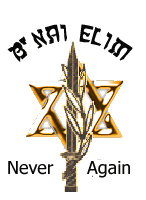














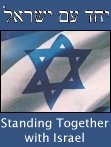

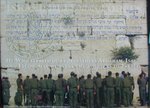

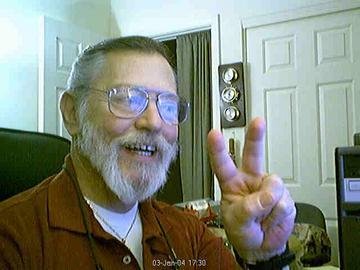






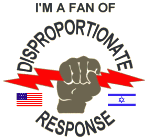



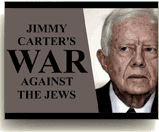

 While doing IDF (Israel Defence Forces) reserve duty on a mountain overlooking the
While doing IDF (Israel Defence Forces) reserve duty on a mountain overlooking the 

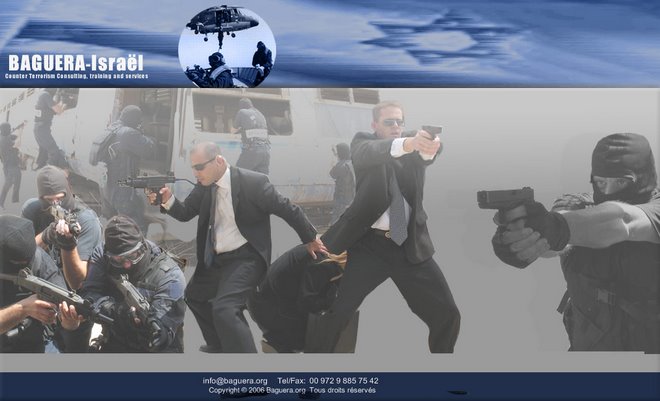



No comments:
Post a Comment